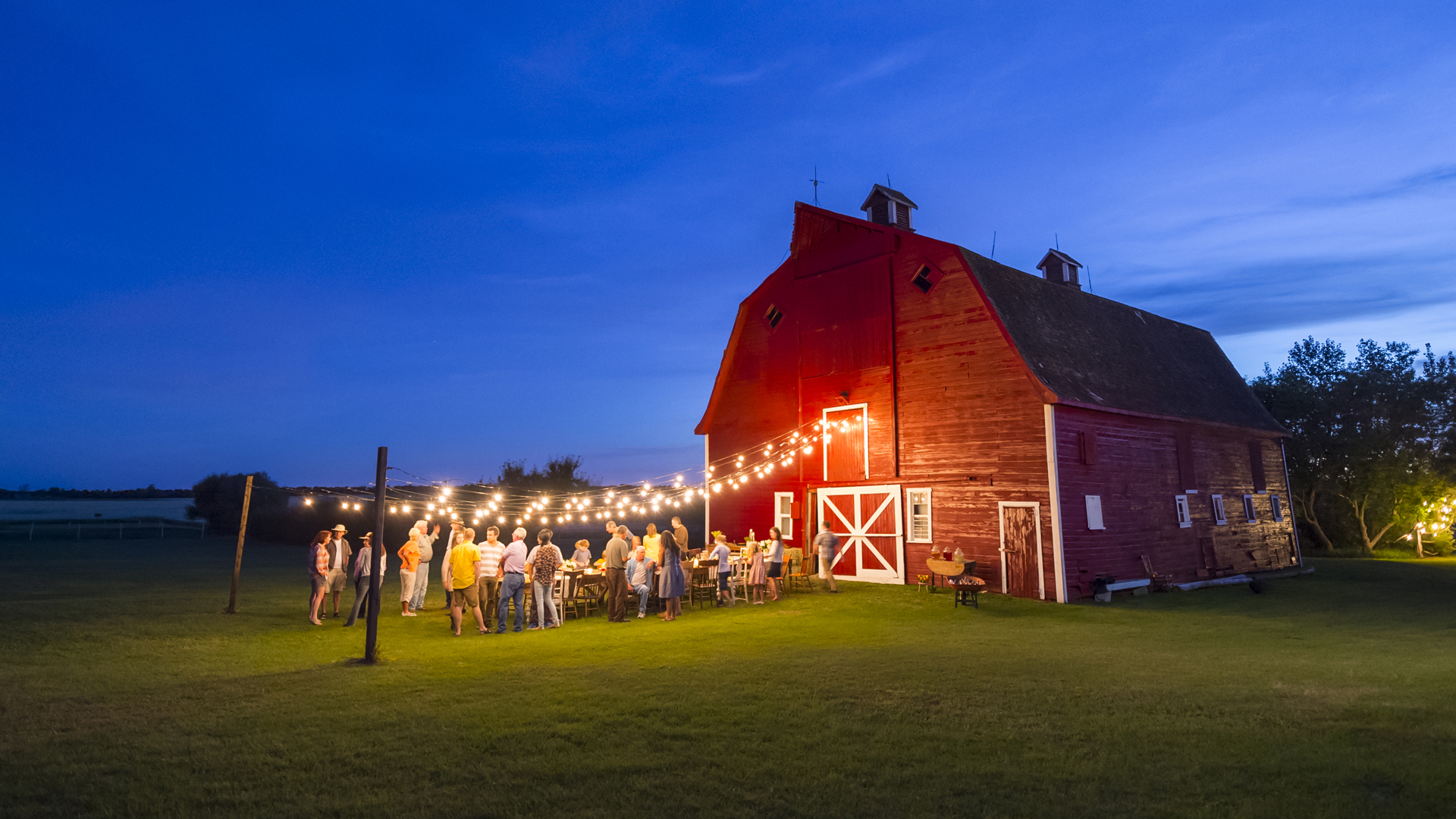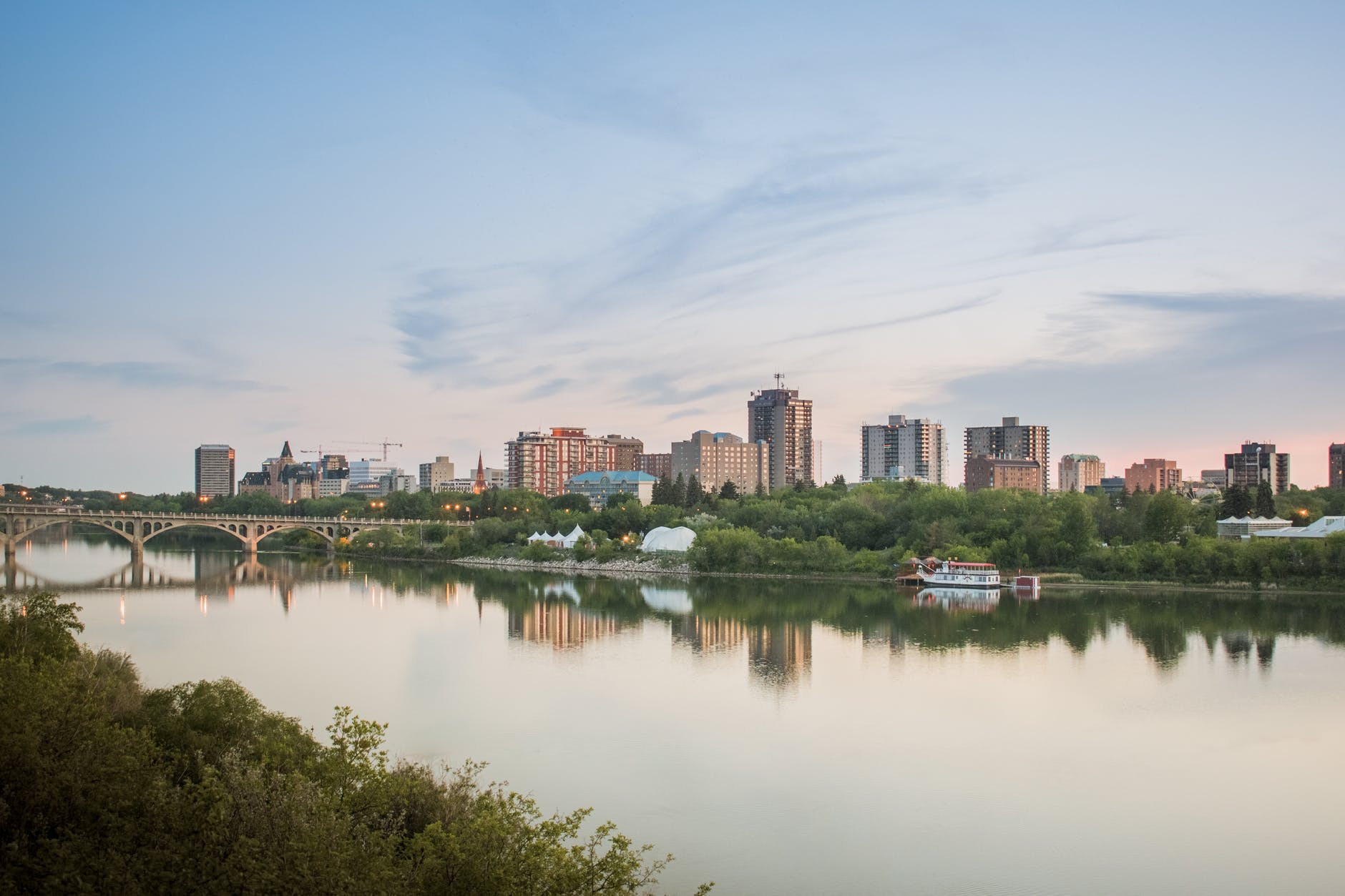1. First steps before moving to Saskatchewan
Finding a job
In September 2023, Saskatchewan had the second-lowest unemployment rate in Canada, at 4.9 percent, which was lower than the national average of 5.5 percent. This was a small increase from September 2022 when the unemployment rate was 4.3 percent, showing a positive trend in employment in the province.
Before moving to Saskatchewan, it’s important to know about the job sectors with high demand. These include healthcare, management, engineering, trades and construction, oil and gas, mining, farming, sales, IT, internships, and student jobs.
When searching for a job in Saskatchewan, make sure to check employment vacancies on popular websites like Indeed, LinkedIn, Workpolis, SimplyHired, and Government of Saskatchewan’s job portal.
Government of Saskatchewan (Sept 2023)
Getting there
If you’re considering moving to Saskatchewan, it’s important to explore your transportation options. You can reach the province by plane, road, ferry, and more.
Flying is the most convenient option, with Saskatoon Airport (YXE) and Regina International Airport (YQR) serving as primary gateways for both domestic and international flights. For road travel, consider companies like Rider Express and KCTI Travels for cost-effective options.
Saskatchewan also offers ferry services, with 12 ferries and one barge operated by the government at various locations across the province.
Must dos before your arrival
You may find it exciting and challenging to move to Saskatchewan. You will be more prepared for your new life in the city if you are aware of these things beforehand.
- Prepare to experience a wide range of temperatures throughout the year, from hot summers to freezing winters with snowfall.
- Pack the appropriate clothing, warm winter clothing, and outdoor gear to enjoy a wide range of outdoor activities like hiking, skiing, snowmobiling, and more.
- Research the cost of living in Saskatchewan, including housing, groceries, transportation, and healthcare, to budget accordingly.
2. Upon your arrival in Saskatchewan
Must dos right upon your arrival
- Apply for a health card via eHealth Saskatchewan. New residents must register themselves and dependents for health benefits.
- Obtain a driver’s license through Saskatchewan Driver’s Licensing and Vehicle Registration.
- Change your address with every service provider in simple steps with MovingWaldo.
- Familiarize yourself with your neighborhood and note emergency numbers, such as the nearest hospital, police station, and fire department, for safety and emergencies.
- If you’re moving from outside Canada, consider securing a cell phone and internet plan. You can conveniently compare them on MovingWaldo’s Home Services and discover the best telecom providers.
Setting up a bank account
Upon arriving in Saskatchewan, prioritize setting up a bank or credit union account for security and financial needs. Options include major banks like RBC, TD, CIBC, Scotiabank, NBC, and local credit unions such as Conexus Credit Union, with branches across the province for your convenience.
Also, some banks might let you open an account before you arrive in Canada. If you require international money transfers, be mindful of fees and compare rates across financial institutions.
Getting health insurance
If you reside in Saskatchewan for at least five months annually, you qualify for Saskatchewan Health benefits, and registration is mandatory for eligibility. Your Saskatchewan Health Services card serves as valuable personal identification and should be presented whenever you require health services.
When you and your family move to Saskatchewan together, your health coverage begins on the first day of the third month following your residency establishment. If your card is lost or damaged, or if you need to update information, you can contact eHealth Saskatchewan immediately.
You can also get additional coverage through employer-sponsored health insurance, which costs an average of $63 per month, or private health insurance, typically ranging from $50 to $150.
Insurance Business (Apr 2023) & Government of Saskatchewan (Sept 2023)
Obtain a drivers licence
To obtain a driver’s license through Saskatchewan Driver’s Licensing and Vehicle Registration. Ensure you meet eligibility requirements, study the Driver’s Handbook, pass a vision test, take a written knowledge test, schedule and pass a road test, pay the required fees, provide necessary documents, have your photo and signature taken, and receive your driver’s license from the Saskatchewan Government Insurance (SGI) office.
Requirements may vary based on the license class and current regulations, so consult the SGI for more detail, visit the closest SGI office in your new area within 90 days of becoming a resident.
3. Best places to live in Saskatchewan
Saskatchewan is a Canadian province known for its vast prairie landscapes, expansive skies that display the Northern Lights, and the reason it is often referred to as the ‘Land of the Living Skies.’ It also stands out for its friendly communities, agricultural innovations, and diverse opportunities.
If you’re unsure about your move destination within Saskatchewan, whether it’s the vibrant cities of Saskatoon or Regina, you might also want to explore other charming smaller cities that offer unique opportunities:
|
Cities |
Characteristics |
|
Regina |
Economic growth & diverse sectors |
|
Saskatoon |
Scenic river & natural beauty |
|
Weyburn |
Agricultural heartland |
|
Estevan |
Sunniest city in Canada |
|
Moose Jaw |
Scenic natural surroundings |
|
Prince Albert |
Rich Indigenous culture and history |
|
Yorkton |
Diverse cultural community |
|
Lloydminster |
Bi-provincial city shared with Alberta with strong oil and gas industry |
Where should I live in Saskatchewan?
Saskatchewan is one of the prairie provinces of Canada. While it doesn’t have large booming metropolitan cities like Toronto and Vancouver, it has plenty of cities brimming with small-town charm and employment opportunities.
- Regina: This is Saskatchewan’s capital city and also the second-largest city in terms of population. Regina has a steadily growing economy and the city is rich in educational and health services. If Regina is your finale choice, you should look into the best neighborhoods the city has to offer before you pick your new address.
- Saskatoon: With a population of 250,000 people, Saskatoon is the most populated province in Saskatchewan. Popularly called “The City of Bridges”, it is one of the most beautiful prairie locations in Canada perched on the banks of the South Saskatchewan River. Furthermore, there are dozens of beautiful lakes within an hour’s drive from the city. Again, if you want to learn more about the best neighbourhoods in Saskatoon, we can help!
- Weyburn: Weyburn is an extremely small town of just 12,000 inhabitants but it has the honor of being called the Best Place to Live in the Prairies. It is one of Canada’s most affordable cities with an average residence value of $302,000 and a high average household income of $126,000.
- Estevan: This is yet another small town with great opportunities. It has a population of only 12,500 people. However, its coal, oil, and gas industries have contributed to a strong economy and an average household income of $128,889.
- Moose Jaw: With a population of 35,000, Moose Jaw is Saskatchewan’s fourth-largest city. The city itself is a strong industrial center and the outskirts of the city are rich in agricultural land.
Setting up home services
Hiring essential home services in Saskatchewan is an easy process, and knowing the cost of utility bills is important.
Electricity is provided by SaskPower, SaskEnergy, Saskatoon Light & Power, and Swift Current Electricity Services, offering residents choice. For natural gas, SaskPower is the primary provider, but alternatives like Future Now Energy and Just Energy are available.
In terms of internet, Shaw and SaskTel are the major providers, with rate comparisons possible through FindInternet.ca. For cell phone services, top carriers include Bell, TELUS, Rogers, and SaskTel.
These resources will help you make informed choices for your home services.
Should you rent or buy?
Saskatchewan continues to offer an exceptionally low cost of living compared to many other Canadian provinces. To put it into perspective, the average monthly rent for a one-bedroom apartment outside the city center in Saskatchewan is $1,000.00. In its major cities like Saskatoon, it’s $1,093.33, and in Regina, it’s $891.67. If you’re considering homeownership, the average cost of a house in Saskatchewan is around $327,800.00, whereas in Saskatoon, it’s $378,300.00, and in Regina, it’s $313,100.00, as of August 2023.
In terms of sales tax, Saskatchewan only charges a 6% Provincial Sales Tax (PST) in addition to the nation-wide 5% Goods and Services Tax (GST). As such, they have a combined sales tax of 11%, which is considerably lower than provinces like Nova Scotia, New Brunswick, Newfoundland and Labradror, Prince Edward Island and Quebec, all of which charge a sales tax of 15%.
Most importantly for families, there is no tuition fee for public school education in Saskatchewan. Furthermore, under the Graduate Retention Program, graduate students are eligible for a $20,000 rebate in tuition.
CREA (August 2023) & Numbeo (Sept 2023)
How do I rent an apartment in Saskatchewan?
To find a house or apartment in Saskatchewan, use online rental platforms like Zillow, Point2Homes, Kijiji, and ApartmentLove. Input your preferences, including location and budget, to discover suitable options. If you prefer cost-sharing, check out Roomies. Don’t forget to prioritize apartments near your workplace or school with easy access to public transit.
How do Saskatchewan leases work?
In Saskatchewan, there are three types of leases or tenancy agreements:
- Month-to-Month Tenancy: These leases are renewed on a month-to-month basis. Termination must be preceded with an advanced notice period.
- Weekly Tenancy: These leases are renewed on a weekly basis.
- Fixed-Term Tenancy: Leases of this nature are only applicable for a fixed period of time, such as 6 months or 1 year and they cannot be terminated before that period.
For specific information, you can refer to the Tenancy Agreements in Saskatchewan.
4. Cost of living in Saskatchewan
|
Category |
Monthly cost |
|
1 bed apt rent outside city center |
$1,000.00 |
|
Groceries Numbeo’s grocery list ($91.79 multiplied by 4) |
$367.16 |
|
Utilities Electricity, heating, cooling, water, garbage |
$132.43 |
|
Internet with 60 Mbps |
$91.00 |
|
Transit pass |
$79.75 |
|
Entertainment Meal, taxi, movie |
$98.00 |
|
Gym membership |
$45.00 |
|
Total |
$1,813.34 |
5. The weather in Saskatchewan
According to the Government of Canada, the province has four distinct seasons. Summers are warm and dry, with high temperatures ranging from 15 °C (59 °F) in May to the mid-30s°C (87 °F) in July and August, and it boasts the most sunshine among Canadian provinces.
Winters typically begin in November, with temperatures mostly below 0°C (32°F). The coldest months are January and February, with lows often below -30°C (-22°F) and highs not exceeding -10°C (14°F)
6. What to do as a local in Saskatchewan
Moving to Saskatchewan offers the chance to enjoy unique local activities.
Locals love exploring the diverse wildlife of Prince Albert National Park, including bison, black bears, wolves, and more. History enthusiasts can visit Batoche National Historic Site, where the Northwest Rebellion of 1885 concluded.
Sports enthusiasts can venture to Cypress Hills Interprovincial Park, the province’s highest point, which offers vast grasslands and outdoor activities such as camping, hiking, wildlife watching, mountain biking, and stargazing. For a remote fishing experience, consider a flight to Milton Lake Lodge, one of Canada’s premier wilderness fishing destinations.
Saskatchewan promises a wealth of experiences for newcomers.
How does public transportation work in Saskatchewan?
Buses are available for transportation in several cities in Saskatchewan. However, you will have to refer to the city’s specific public transit website for a schedule. If you belong to a low-income category, you may also be eligible to apply for a Discounted Bus Pass.
Up until recently, ridesharing apps like Uber and Lyft were not allowed in Saskatchewan. However, following a provincial decision made in mid-December 2018, ridesharing apps will be available in Saskatchewan.
Where should I get food, alcohol, and different amenities in Saskatchewan?
- Food: The most popular food offerings of the province include Bison meat, Saskatoon Berries, Chokecherries, and Waterfowl. You can purchase local food from a groceries store called SaskMade. The two most famous farmers markets in the province are Regina Farmers’ Market and Saskatoon Farmers’ Market.
- Alcohol: The legal drinking age in Saskatchewan is 19. The official liquor regulating body in Saskatchewan is Saskatchewan Liquor and Gaming Authority. You can use their Store Locator to find a legitimate liquor retailer near you.
- Prescription Drugs: One of the most reliable sources for pharmaceutical needs and prescription drugs is The Medicine Shoppe Pharmacy located on the University of Saskatchewan campus in Place Riel. You can also find medicines in national pharmacy retailer Shoppers Drug Mart which is available everywhere in the province.
- Cosmetic Products: Saskatchewan’s most popular retail outlets for cosmetic products are Sephora, Shoppers Drug Mart, Pure Ananda Cosmetics, and CosmoProf.
- Hardware and Tools: You can order hardware and tools online from Home Hardware. Or you can visit brick-and-mortar departmental stores such as Wood Country, Lowe’s and Canadian Tire.
7. Fun facts about Saskatchewan
- Saskatoon boasts 2,380.8 annual hours of sunshine, making it Canada’s sunniest city.
- Saskatchewan is home to over 100,000 lakes, covering 59,366 square kilometers of land.
- Athabasca Sand Dunes in Saskatchewan is the country’s largest active dune field, stretching 100 kilometers.
- Saskatchewan has 26,000 kilometers of highways, the most among all provinces.
- Regina’s Albert Memorial Bridge, spanning 850 feet (0.26 km), holds the record for the world’s longest bridge over the shortest expanse of water.
Conclusion
Moving to Saskatchewan means embracing a vibrant prairie lifestyle with stunning landscapes and friendly communities, offering a unique Canadian experience. Enjoy a balance between nature and city life in the heart of Canada.
If you’re contemplating a move to Saskatchewan soon, it’s wise to plan ahead by researching movers in the major cities. Are you seeking an urban environment with natural beauty and a thriving economy? We recommend the best movers in Saskatoon. On the other hand, if you’re drawn to the provincial capital with its vibrant cultural scene, then the best movers in Regina are the way to go for a smooth and stress-free move.





